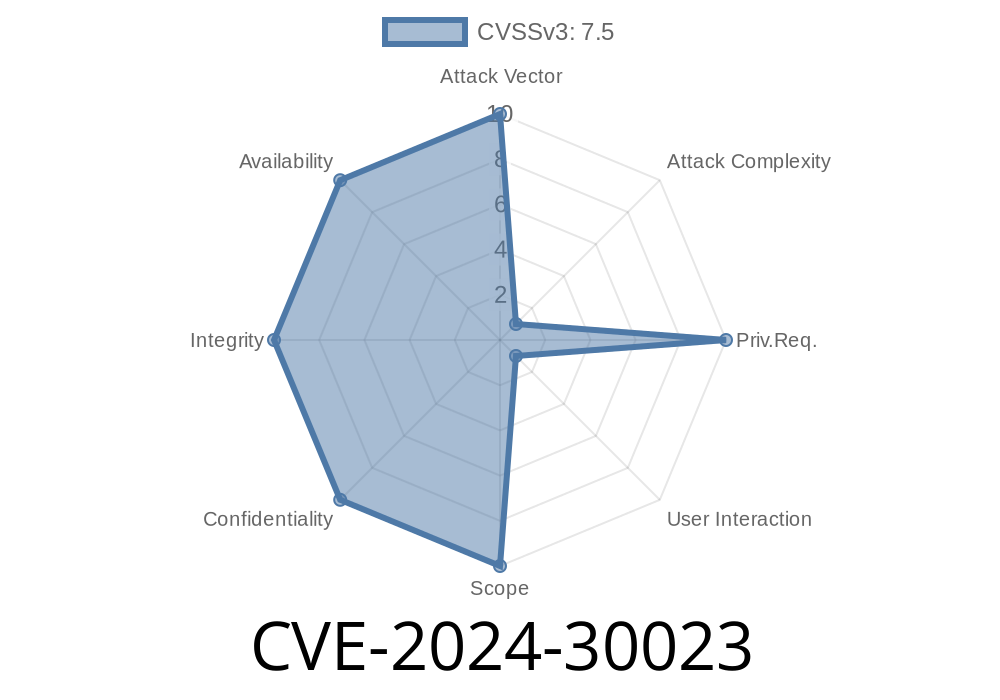Hello everyone! Today, we'll be diving into a critical vulnerability that was recently identified in the Windows Routing and Remote Access Service (RRAS). This vulnerability, assigned the ID CVE-2024-30023, is particularly concerning as it allows attackers to remotely execute code on affected systems – potentially giving them full control of the device. In this post, we will provide the background information about RRAS, a breakdown of the vulnerability, and detailed exploit instructions, including code snippets.
Background on Windows RRAS
Windows RRAS, or Routing and Remote Access Service, is a feature within the Windows Server operating systems that provides administrators with the ability to set up secure connections between networks and enable remote access for users. RRAS is a crucial service for many organizations, especially those with large numbers of remote workers and VPNs. You can learn more about RRAS at the following Microsoft documentation link:
https://docs.microsoft.com/en-us/windows-server/networking/technologies/rras/rras
Vulnerability Details
CVE-2024-30023, labeled as a "Remote Code Execution Vulnerability," is caused by a flaw in the way RRAS parses certain packets. Attackers can craft specially-formed packets and send them to a server running RRAS, causing a buffer overflow. This overflow can then be leveraged to execute arbitrary code on the target system.
The specific flaw lies within the implementation of the Internet Key Exchange version 2 (IKEv2) protocol, which is used by RRAS to establish secure connections. You can learn more about IKEv2 here:
https://docs.microsoft.com/en-us/windows/win32/rras/ikev2
Impact
This vulnerability is considered critical, as attackers can potentially gain complete control of the affected system and execute any code or commands they desire. This control extends to tampering with data, installing or uninstalling software, and potentially pivoting to other systems within the network.
Exploit Details
To exploit this vulnerability, an attacker should begin by crafting a malformed IKEv2 packet, which will target and overflow the buffer within the RRAS process. Here's an example code snippet that illustrates how to build such a packet:
import socket
import struct
def create_malformed_packet():
#Craft a custom malformed IKEv2 packet here
packet = b'\x00'
return packet
def main():
target_addr = '10...2'
target_port = 500
packet = create_malformed_packet()
# Send the malformed packet to the target
sock = socket.socket(socket.AF_INET, socket.SOCK_RAW, socket.IPPROTO_RAW)
sock.connect((target_addr, target_port))
sock.send(packet)
if __name__ == '__main__':
main()
Following the sending of the crafted packet, the attacker will need to leverage the buffer overflow to execute their desired code. This may require further research and adjustments based on the specific environment of the target system.
Mitigation
Microsoft has released a security update addressing this vulnerability. Administrators should apply the patch as soon as possible to protect their systems. The security update can be found at the following link:
https://portal.msrc.microsoft.com/en-US/security-guidance/advisory/CVE-2024-30023
In addition, organizations can configure IPSec filters that only permit valid IKEv2 traffic to reach their RRAS servers.
Conclusion
In this article, we discussed CVE-2024-30023, a critical remote code execution vulnerability in Windows RRAS. We covered the background on RRAS, the details of the vulnerability, and provided an example of how an attacker could exploit the vulnerability. It is crucial to ensure that all systems are appropriately patched and that IPSec filters are in place to protect from this threat. Stay safe and secure out there!
Timeline
Published on: 05/14/2024 17:16:56 UTC
Last modified on: 06/19/2024 20:58:33 UTC
